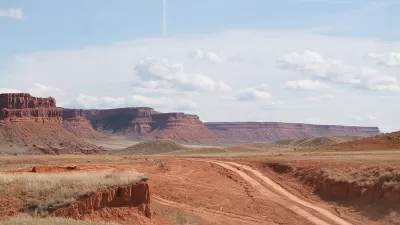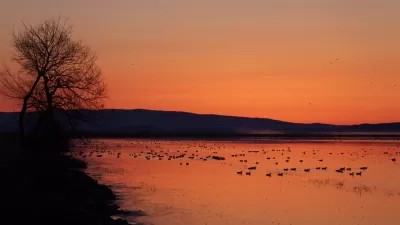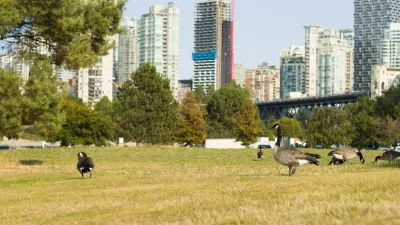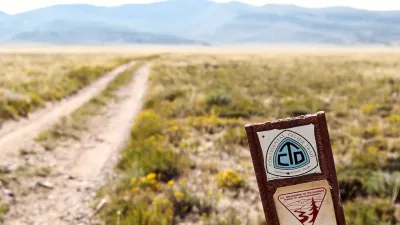The president's ambitious commitment to protect 30% of U.S. land and water by 2030 might be too broad in attempting to satisfy all land users.

In the days after his inauguration, President Biden made a "commitment to protecting 30% of U.S. land and water — over 720 million acres — by 2030." But, as Wufei Yu reports in High Country News, a preliminary report by the Department of Interior has made "Western and Indigenous climate activists and conservationists fear that it promises too much and could hamper conservation by trying too hard to please all the various land users."
Yu writes:
In order to tackle three challenges — the disappearance of nature, climate change and inequitable access to the outdoors — the report laid out a locally led, science-based and collaborative road map toward achieving “30 by 30.” As part of it, the Biden administration invited farmers, ranchers and fishermen to get involved, promising to maintain ranching in the West “as an important and proud way of life.” The report also acknowledged the conservation movement’s discriminatory past, including its appropriation of Native American ancestral land and neglect of communities of color, and it vowed to work toward a more inclusive future.
"Many conservationists pointed out, however, that, according to the America the Beautiful report, farming, grazing and logging could count as conservation under the 30% designation if the land is managed with “the long-term health and sustainability of natural systems” in mind." These solutions, some argue, "only kick the can of problems down the road." States, Yu writes, have to take action too. "Historically, most conservation projects happen on the region’s public lands. So far, two states have hopped on board. Nevada became the first to pass legislation adopting the conservation goal, while California Gov. Gavin Newsom signed an executive order that will establish listening sessions with tribal members and private landowners regarding the project."
FULL STORY: A reality check on Biden’s ‘30 by 30’ conservation plan

Planetizen Federal Action Tracker
A weekly monitor of how Trump’s orders and actions are impacting planners and planning in America.

Maui's Vacation Rental Debate Turns Ugly
Verbal attacks, misinformation campaigns and fistfights plague a high-stakes debate to convert thousands of vacation rentals into long-term housing.

San Francisco Suspends Traffic Calming Amidst Record Deaths
Citing “a challenging fiscal landscape,” the city will cease the program on the heels of 42 traffic deaths, including 24 pedestrians.

Defunct Pittsburgh Power Plant to Become Residential Tower
A decommissioned steam heat plant will be redeveloped into almost 100 affordable housing units.

Trump Prompts Restructuring of Transportation Research Board in “Unprecedented Overreach”
The TRB has eliminated more than half of its committees including those focused on climate, equity, and cities.

Amtrak Rolls Out New Orleans to Alabama “Mardi Gras” Train
The new service will operate morning and evening departures between Mobile and New Orleans.
Urban Design for Planners 1: Software Tools
This six-course series explores essential urban design concepts using open source software and equips planners with the tools they need to participate fully in the urban design process.
Planning for Universal Design
Learn the tools for implementing Universal Design in planning regulations.
Heyer Gruel & Associates PA
JM Goldson LLC
Custer County Colorado
City of Camden Redevelopment Agency
City of Astoria
Transportation Research & Education Center (TREC) at Portland State University
Jefferson Parish Government
Camden Redevelopment Agency
City of Claremont





























